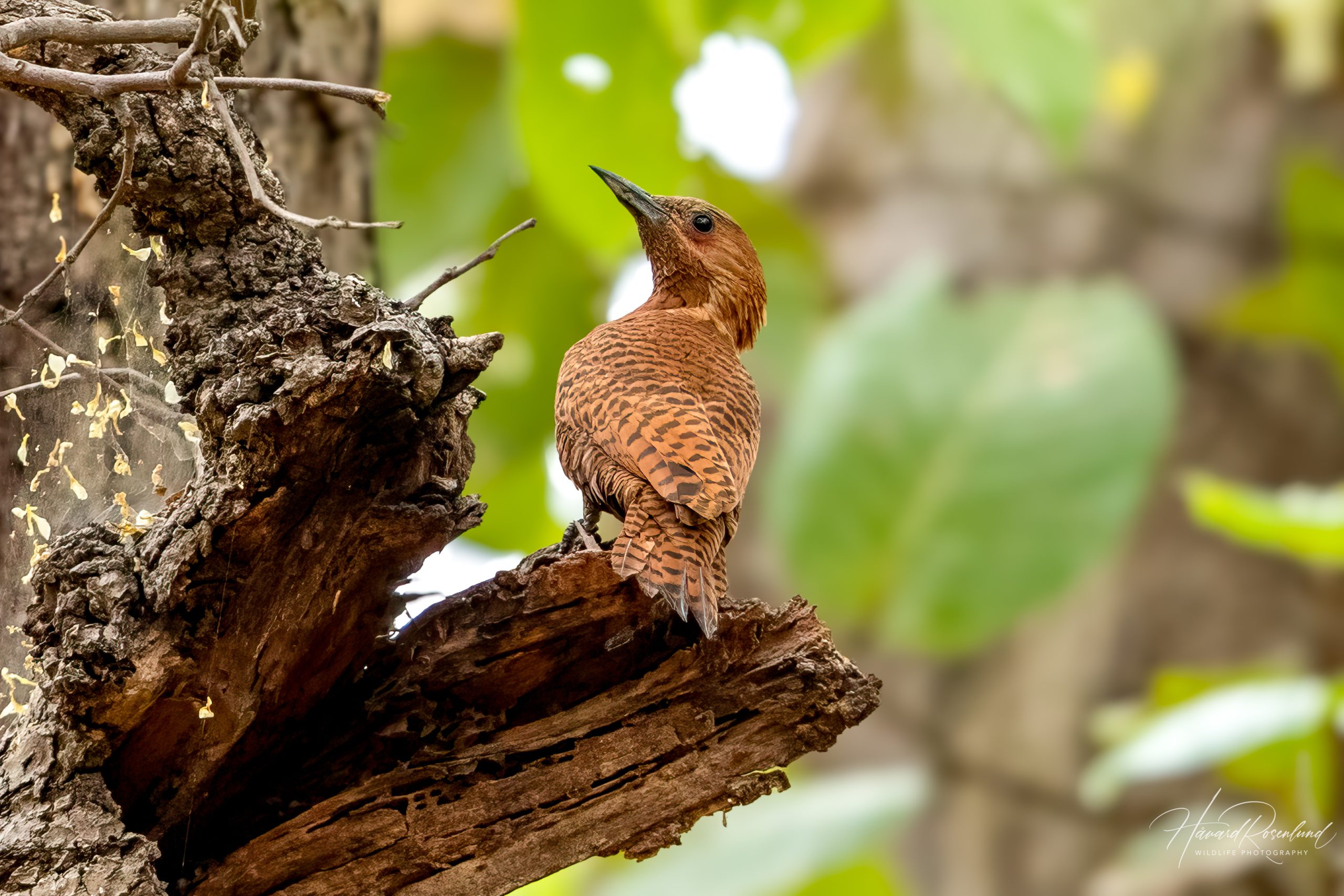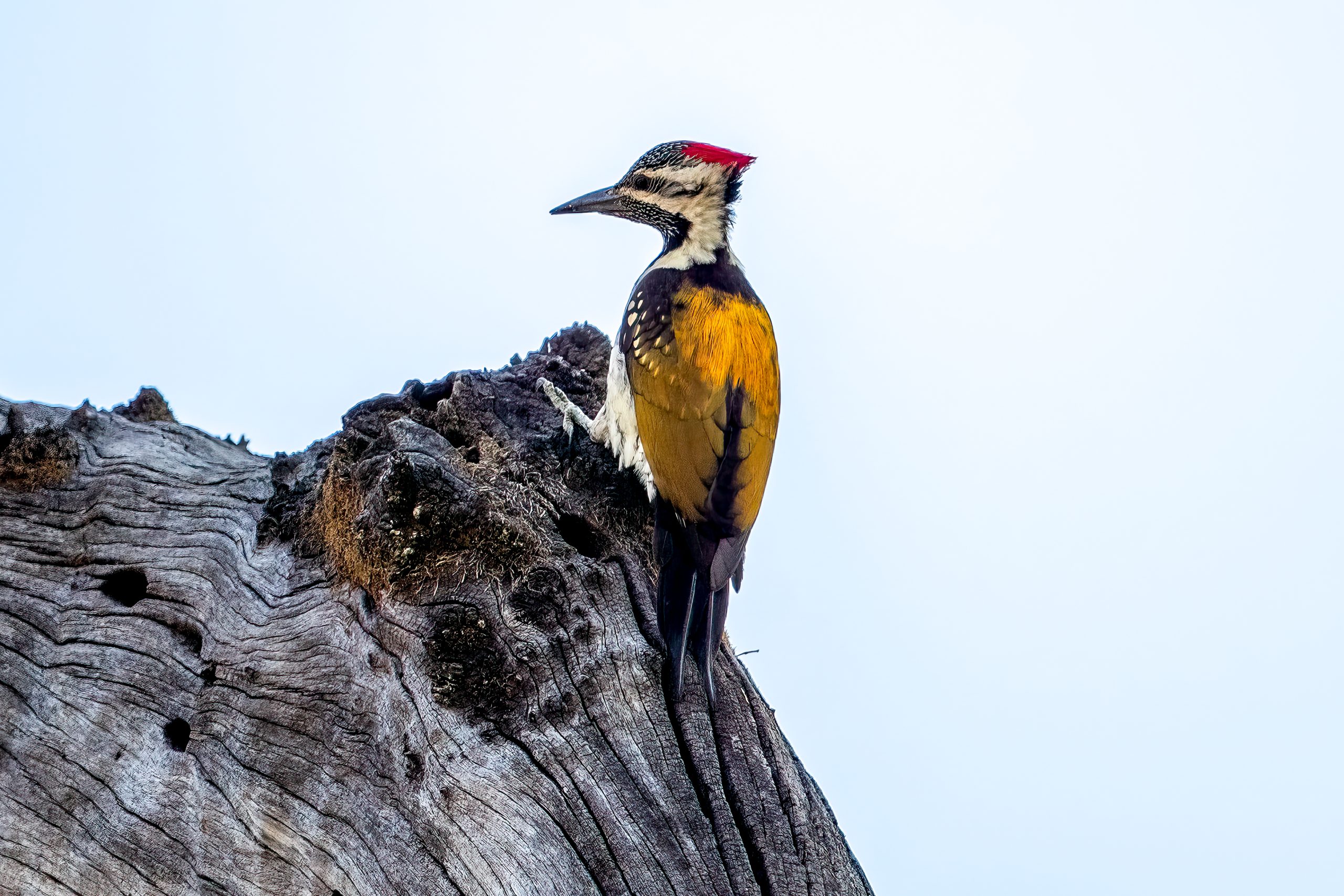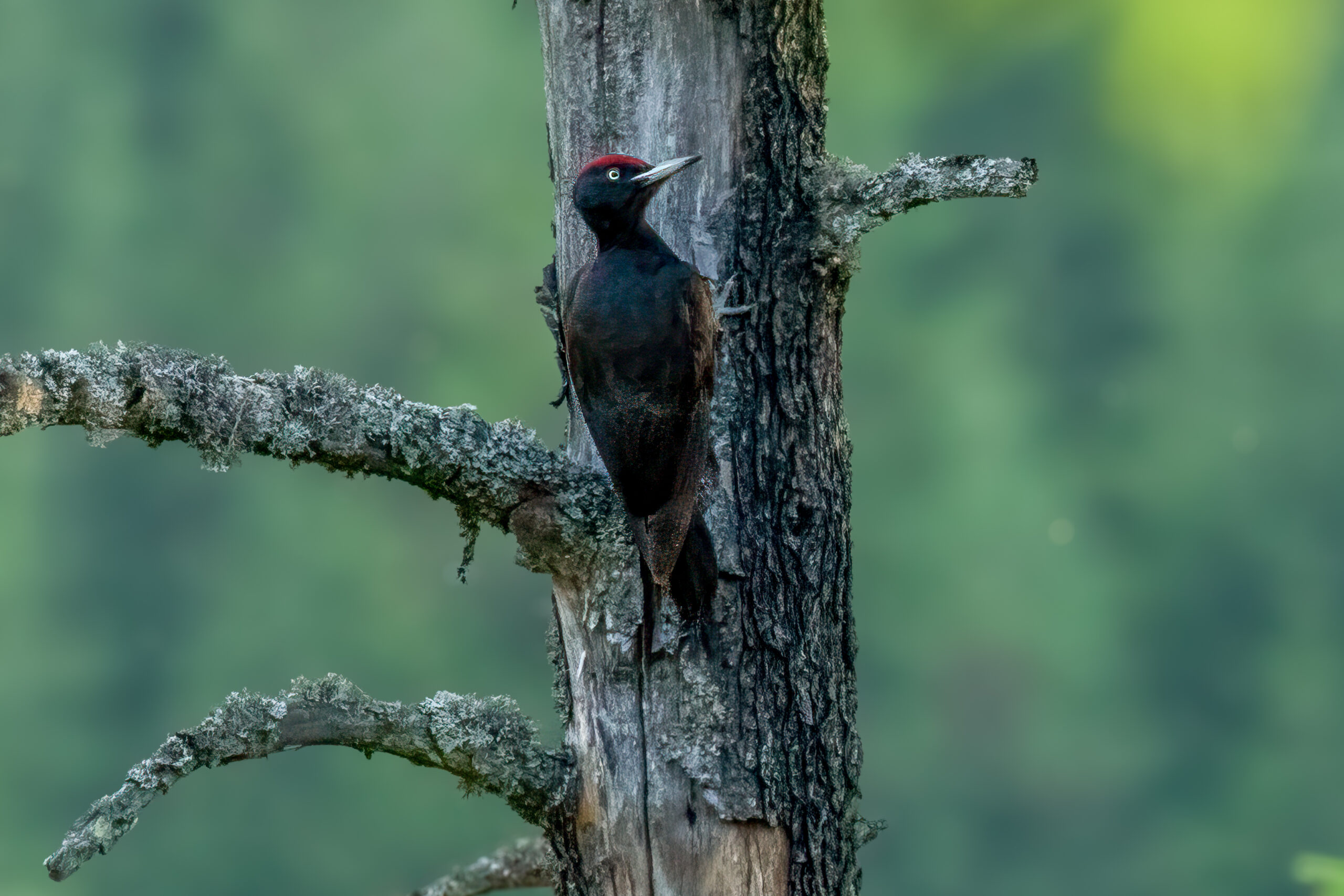Description
The rufous woodpecker (Micropternus brachyurus) is a distinct medium-sized woodpecker native to the tropical regions of South and Southeast Asia. It ranges from the Indian subcontinent through Southeast Asia to Indonesia. The bird typically measures about 25–27 cm (9.8-10.6 in) in length, with a wingspan of around 40 cm (16 in). It has a uniform rufous-brown plumage with dark barring on back, wings, flanks, and tail, giving it a unique appearance among woodpeckers. It has a relatively short and slightly curved bill. Males have a red patch beneath the eyes, which the females lack.
Diet & habitat
The rufous woodpecker primarily inhabits tropical and subtropical forests, often favoring bamboo thickets, mangroves, and secondary growth forests. It feeds mainly on ants and termites, using its strong bill to break into nests and colonies. This species is known for its unique feeding behavior of raiding the nests of acrobat ants in the genus Crematogaster. It employs a specialized technique to feed on these ants and their larvae, which make up a significant part of its diet.
Nesting
Breeding season for the rufous woodpecker varies with region, but usually occurs sometime between February to June in most regions. The species exhibits a fascinating nesting behavior; as it often constructs its nest within the nests of aggressive ants, such as the acrobat ants. This unusual choice provides the nest with a natural deterrent against predators. The female lays about 2 to 3 eggs, which are incubated by both parents. The incubation period lasts approximately 14 days, and the fledgling period extends to about 20 days, during which both parents actively feed and protect the young.
Status
The rufous woodpecker is currently listed as least concern by the IUCN Red List, indicating that it is not at immediate risk of extinction. However, like many forest-dwelling species, it is potentially threatened by habitat loss due to deforestation and land conversion for agriculture and urbanization. Conservation efforts in its range are crucial to ensure the preservation of its habitat and the species itself.






